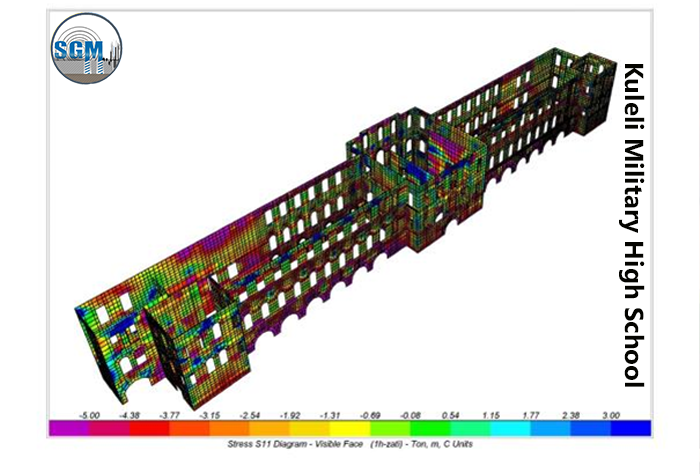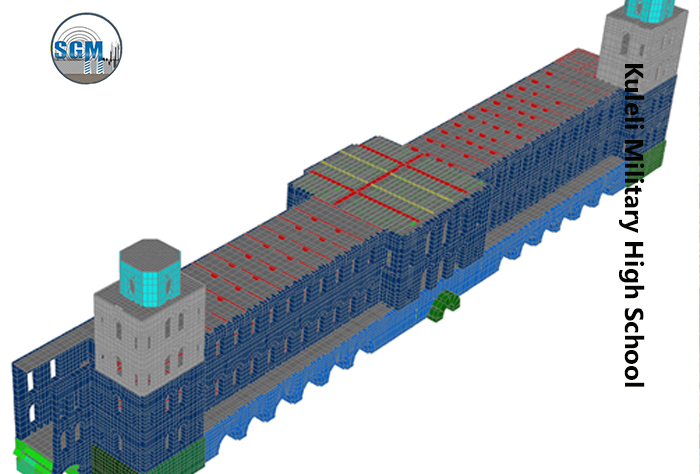
PLACE: | ISTANBUL |
COMPANY: | SGM (Sismik Güçlendirme merkezi) (Seismic Strengthening Center) |
TOTAL AREA: | 20000 m2 |
TYPE OF JOB: | Analysis, FEM modeling, |
STRUTURE TYPE: | Masonry: Stone, Brick |
MONUMENT AGE: | 500 years. |
DATE: | 2008 |
SOME ASPECTS: | Very large and long structure. 125-150m |
The structure during Ottoman Empire had so many functions. In 1967 a rest or ation w or k has been done. The 3 flo or s inside structure that were carried by long beams sitting on side and wide walls with 15m span were removed and a new concrete beam column frame construction were insert ed. By this method all flo or loads were transferred to new concrete columns and nothing is left on the walls. The walls are 1.5m thick at the bottom and 90cm at the top with 18m of height.
One of the main properties of masonry walls is that having m or e loads on it means m or e strength it can carry. By removing load from the wall and also have no connection to the flo or s they are very susceptible to earthquake.
F or strengthening and retrofitting of this structure 5 main systems were used.
A Gravure of Kuleli Military high school from Thomas Allom in 1845
FEM modeling

close *Name * Email * text message |
Inonu Cad. Sumer St. Zitas D1 Block No:19/8 Kozyatagi Istanbul,Turkey PK:34742
Phone: +90 (216) 416 86 74
WhatsApp: +90 542 585 25 95
seismicreinforcementcenter@gmail.com
Copyright © 2024 SGM All rights reserved



.png)
.png)
.png)
.png)